NorthEast Radio Watch 12/23 & 12/30/2024: WKIT Lives!
In this week’s issue… WKIT finds a buyer - Eskin out at WIP - Staff shifts in Utica - CRTC approves Bell divestitures
Text and photos by SCOTT FYBUSH
It’s late on a Sunday afternoon in the Texas heat. We’ve pulled in to the Bryan-College Station market, checked into the hotel, set up our recorders, and indulged another one of our travel habits, visiting presidential museums. (The George H.W. Bush museum is a nice one, with lots of engaging exhibits and a beautiful walk around a lake to the secluded gravesite where George and Barbara are buried. 4.5 stars. Go visit.)
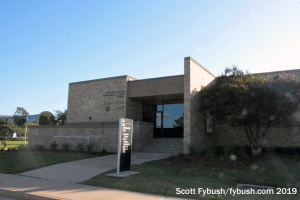

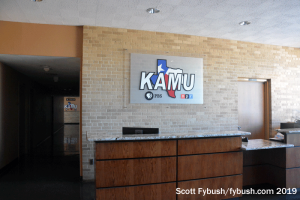

What to do next? It’s late on a Sunday, yes – but the chief engineer of the local public broadcaster is just back from his own weekend travels and happy to give a quick tour of his studio, and so off we go to the other side of Texas A&M University to see what things look like inside KAMU-TV (Channel 12) and KAMU-FM (90.9).
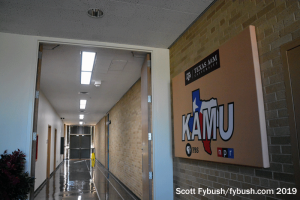

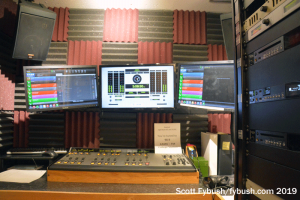

The Moore Communications Center is a squat tan brick building on Houston Street, just off George Bush Drive, one of the main drags that runs through the university.
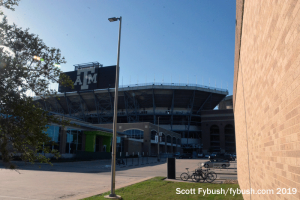

If it’s not the very first thing you notice here, you could be excused: its rear parking lot backs right up to the massive Kyle Field, the biggest stadium in Texas and the fourth-biggest in the country.
Imagine what the scene must be like here on Aggies game day, when more than 100,000 fans converge here to root for their team against the Longhorns or whatever other rival they’re playing!
Fortunately for us, it’s not a game day, so we can park right in the lot and walk in the back door, which opens to KAMU’s main studio hallway.
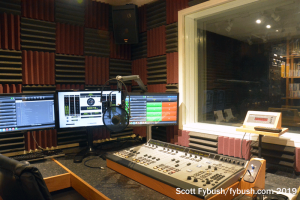

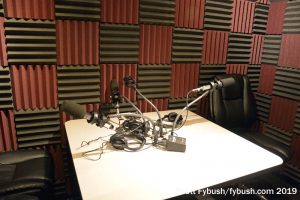

A side hallway here leads to the small studio complex for KAMU-FM, which carries a hybrid format that mixes NPR news and talk with classical music. It’s cozy and well-designed, with Axia consoles and a compact talk studio and control room adjoining the main air studio and a hallway that doubles as a music library.
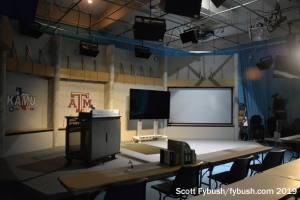

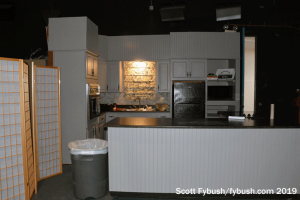

Across from the radio studios, the long hallway along the back of the building opens to two big TV production studios. These spaces are used not only for KAMU-TV productions but also for distance learning, and there are sets here for classroom teaching and for cooking shows, too.
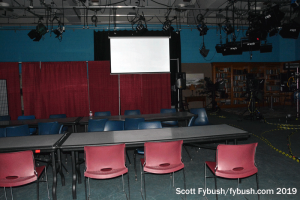

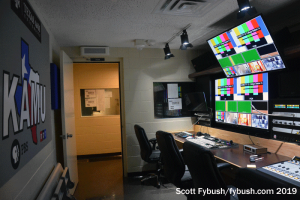

There’s a production control room across the hall, and a larger master control area for KAMU-TV’s three channels, which include World and Kids channels alongside the main KAMU 12.1 channel.
(Quick bit of history here: KAMU-TV came on the air in 1970 on UHF channel 15, and it stayed there until the end of analog TV in 2009. By then, KAMU’s digital signal had hit the air on VHF channel 12 – and unusually, it was able to change its virtual channel from 15 to 12, where it doesn’t really conflict with anyone else. I assume that before KAMU-TV came on the scene, cable viewers or those with big rooftop antennas could get educational TV here by way of Houston’s KUHT, channel 8.)
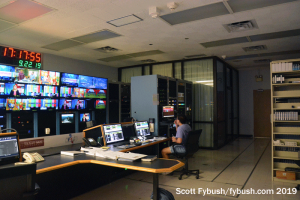

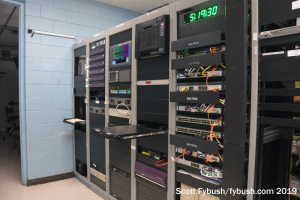

A rack room off master control houses the racks for KAMU-TV and KAMU-FM, including their satellite receivers, automation, STLs and so on. There’s a big garage in back, too, with a storage area full of older equipment and even some older promotional items. (We scored a KAMU-TV mug with the old “15” logo on it, which now occupies a proud place on our desk here.)
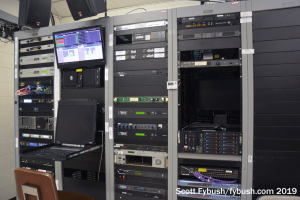

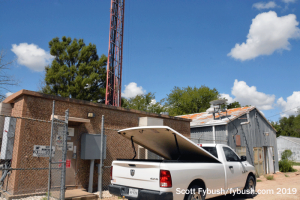

As for KAMU’s FM and TV transmitters, they’re just a few miles north of the studio, up at the north end of the A&M campus, tucked in next to the university’s horticulture gardens.
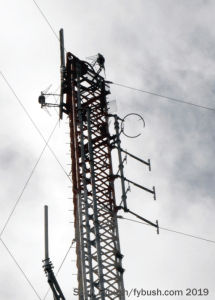

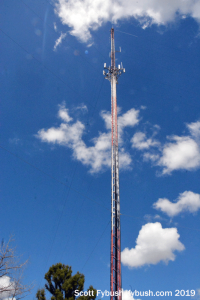

This isn’t a very tall tower – barely over 300 feet, in fact. I suspect it was once crowned by a top-mounted UHF antenna for the old analog channel 15 signal, but that’s gone now, and instead there’s a panel antenna mounted around the top of the tower for the digital signal on VHF channel 12, above the KAMU-FM Jampro antenna.
At least based on the signage on that metal shed at the tower base, the KAMU transmitters share the building with some of the horticulture garden offices.
A final note before we move on to the commercial side of the market: as we observed when we were over in Waco in an earlier part of this trip, this is another one of those artificial TV markets. While the nominal “Waco/Bryan-College Station” market covers a huge swath of central Texas, KAMU-TV only reaches the eastern portion over here in College Station and Bryan. Even after the Waco-Temple side of the market (the I-35 corridor an hour to the west) lost its own PBS station, KNCT-TV (Channel 46), a few years ago, that’s still not KAMU territory – it’s served on cable by Austin’s KLRU and Dallas’ KERA.
(The commercial TV stations do it differently; we’ll show you how in next week’s installment.)
Thanks to KAMU’s Wayne Pecena for the tours!
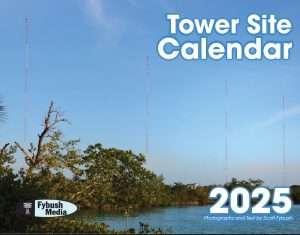
Behold, the 2025 calendar!
We chose the 100,000-watt transmitter of the Voice Of America in Marathon, right in the heart of the Florida Keys. This picture has everything we like in our covers — blue skies, greenery, water, and of course, towers! The history behind this site is a draw, too.
Other months feature some of our favorite images from years past, including some Canadian stations and several stations celebrating their centennials (can you guess? you don’t have to if you buy the calendar!).
We will ship daily through Christmas Eve. Place your order now for immediate shipping!
This will be the 24th edition of the world-famous Tower Site Calendar, and your support will determine whether it will be the final edition.
It’s been a complicated few years here, and as we finish up production of the new edition, we’re considering the future of this staple of radio walls everywhere as we evaluate our workload going forward.
The proceeds from the calendar help sustain the reporting that we do on the broadcast industry here at Fybush Media, so your purchases matter a lot to us here – and if that matters to you, now’s the time to show that support with an order of the new Tower Site Calendar. (And we have the new Broadcast Historian’s Calendar for 2025 ready to ship, too. Why not order both?)
Visit the Fybush Media Store and place your order now for the next calendar, get a great discount on previous calendars, and check out our selection of books and videos, too!
And don’t miss a big batch of Bryan-College Station IDs next Wednesday, over at our sister site, TopHour.com!
Next week: More Bryan and College Station
In this week’s issue… WKIT finds a buyer - Eskin out at WIP - Staff shifts in Utica - CRTC approves Bell divestitures
In this week’s issue… WBUR backs off local talk - EMF's expansion in NY, nationally - Rochester broadcasters honored - Russell finds new PA radio home - Remembering Bruce Stevens - The new calendar's here!
In this week’s issue… Remembering WNY's Palvino, Harris - Will King sell Bangor stations? - Kay moves earlier - New signal on LI - Cumulus cuts hit PA, New England - Frizzell sells in NH
In this week’s issue… Saluting a small-town radio vet - Bell moves CP24 - Scott heads west - Burlington gets Air 1, "Experimental Radio" - Family Life heads down I-86